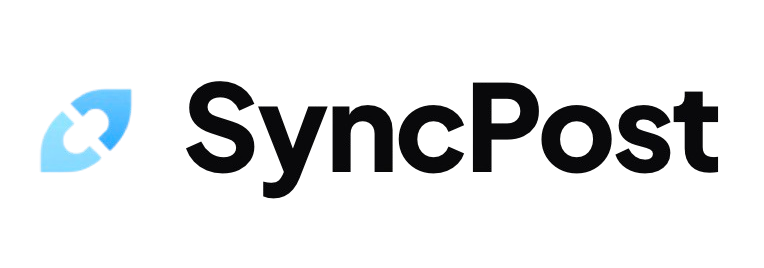
Understanding the Social Media Posting
Managing your business posts on multiple social media platforms can feel like spinning plates. You need to create different content for Instagram, Facebook, Twitter, and LinkedIn while keeping track of the best times to post on each one.
Social media keeps changing how people connect with businesses online. Recent research from HubSpot shows that companies using multiple social platforms get better results than those focusing on just one channel.
You can master social media posting by learning the right strategies and tools. We'll show you how to pick the best platforms for your business, create engaging content, and set up a posting schedule that works.
Defining Your Platform Mix
Start by looking at where your target audience spends their time online. You'll find different age groups and interests across platforms - like how TikTok attracts younger users while LinkedIn caters to professionals.
Each platform offers unique ways to share your message. For example, Instagram works great for visual product displays, while Twitter helps you join quick conversations with your audience.
Think about your available time and team size when choosing platforms to focus on. It's better to do an excellent job on two platforms than a mediocre job on five - pick the ones where you can consistently create good content and engage with your followers.
Content DNA Framework
Think of your brand's Content DNA as your secret recipe for creating content that feels like you. Just like your speaking style makes you unique, your brand needs its own special way of talking to connect with people.
Your content pillars are the main topics you'll focus on. For example, if you run a fitness business, your pillars might be workout tips, healthy eating, and recovery techniques. These pillars help you stay focused and make content planning easier.
Each pillar branches into specific themes that match what your audience wants to learn. Using our fitness example, your workout tips pillar could include themes like home exercises, gym routines, and quick workouts for busy people. This helps you create content that makes sense to your readers while staying true to your brand's style.

Platform Specific Content Optimization
Each social platform has its own sweet spot for visual content. Instagram prefers square 1:1 images for feed posts and 9:16 for Stories, while LinkedIn works best with 1.91:1 landscape images. Pinterest needs tall 2:3 images to stand out in the feed.
Your captions need different approaches too. Instagram allows up to 2,200 characters and thrives on emoji and multiple hashtags. Twitter keeps you short and snappy with 280 characters, while LinkedIn rewards longer, professional text without too many hashtags.
Make the most of each platform's special features. You should use Instagram's product tags for shopping posts, Twitter's polls for engagement, and LinkedIn's document sharing for detailed content. Facebook's Groups help build communities around your content.
Remember that cross-posting the same content everywhere won't give you the best results. You should adjust your message for each platform's audience and style.
Content Repurposing Mastery
Getting more from your content starts with a simple multiplication approach. Think of your main content piece as a source that can create 5-10 smaller pieces.
For example, you can turn a blog post into social media updates, an email newsletter, and short video clips.
Each platform needs its own content style to work well. Instagram posts need eye-catching visuals and brief captions, while LinkedIn articles can go deeper into business insights.
You can adjust your message by changing length, style, and format to match what works best on each platform. A how-to guide can become a quick tips thread on Twitter or a step-by-step carousel on Instagram.
Using the right tools makes this process much faster and easier. SyncPost helps you manage and automate your content sharing across different platforms, saving you hours of manual work each week.
Our recommendation is to start with one piece of content and test different formats on 2-3 platforms before scaling up your repurposing efforts.
Visual Content Strategy
Your visual brand needs to be instantly recognizable across all social media platforms. Pick 2-3 main colors and stick to them in all your posts, along with consistent fonts and image styles.
Social media platforms have different image size requirements that can make or break your visual content. Here are the most important specs to remember:
- Instagram Feed: 1080 x 1080 pixels (square)
- Facebook Link Posts: 1200 x 630 pixels
- Twitter Images: 1600 x 900 pixels
- LinkedIn Company Updates: 1200 x 627 pixels
Creating stunning visuals doesn't require a design degree or expensive software. Canva offers pre-made templates sized perfectly for each platform, while apps like VSCO help maintain consistent photo editing styles.
Keep your visual content simple and high-quality. A clean, consistent look helps your audience recognize your brand instantly, leading to better engagement and more shares.
Algorithmic Engagement Optimization
Social media algorithms work like smart assistants that decide what content shows up in your feed. They track what posts you like, share, and comment on to figure out your interests. These systems use this information to show you more of what you enjoy and less of what you ignore.
Your content needs three main triggers to get the algorithm's attention: quick engagement in the first hour, meaningful comments, and saves or shares. When people interact with your posts right after they go live, algorithms see this as a sign of quality content. This tells the system your content is worth showing to more people.
To get better results, post when your followers are most active and reply to comments within the first hour. Create content that asks questions or encourages people to share their thoughts. You should also make your posts easy to save by including helpful tips or information people will want to reference later. For more details about how social media algorithms affect your content's visibility, check out this helpful guide from Social Media Today.
Audience Analysis Framework
Understanding your social media audience starts with gathering the right data. You can collect valuable insights through your social media platform's built-in analytics tools. These tools show you when your followers are most active and what type of posts they interact with most.
Breaking down your audience into smaller groups makes your content more effective. You can group people based on their age, location, and what they like to do online. For example, some of your followers might prefer quick tips in the morning, while others engage more with detailed posts in the evening.
Your content needs to match what each audience group wants to see. If you notice younger followers prefer video content, create more short-form videos for them. When older followers engage more with how-to posts, make sure to include those in your content mix. This way, you're not just posting content - you're creating posts that specific groups of your followers will actually want to see.

Posting Schedule Optimization
The best time to share your posts depends on when your audience is most active online. Research your social media analytics to find peak engagement hours - for most businesses, this is typically weekdays between 9 AM and 3 PM. Your followers might check social media during lunch breaks or right after work, making these ideal posting windows.
Finding the right posting frequency is about balance, not flooding your followers' feeds. Start with 3-4 posts per week and track which days get the most engagement. You can slowly increase or decrease your posting frequency based on how your audience responds.
Make your life easier by using scheduling tools to plan your content ahead of time. Most social media platforms now have built-in scheduling features that let you set up a week's worth of posts in one sitting. This way, you can maintain a consistent posting schedule without having to manually post content every day.
Engagement Rate Optimization
Your engagement rate shows how many people interact with your posts compared to how many see them. The main metrics to track are likes, comments, shares, and saves - these tell you if your content actually connects with your audience.
People engage with content that either helps them solve a problem or makes them feel something. When you share a funny story about your business mistakes or give a quick tip that saves time, you're more likely to get responses from your followers.
To boost your engagement rates, post when your audience is most active and respond to comments within the first hour. The social media algorithms favor posts that get quick engagement, so timing really matters. Make your captions ask questions or include clear calls to action like "Share your experience below!" For more ways to improve your engagement, check out these practical social media tips from the Content Marketing Institute.
Performance Analysis Framework
Understanding your social media success starts with tracking the right numbers. Your key metrics should include engagement rate (likes, comments, shares), reach (how many people see your posts), and conversion rate (how many followers become customers).
Free tools like Google Analytics and Meta Business Suite help you track these numbers easily. These platforms show you which posts work best and what times your followers are most active.
To improve your results, post when most of your followers are online and reply to comments within an hour. Testing different types of content, from photos to short videos, helps you find what your audience likes best.
Implementation Roadmap
Let's recap the key strategies we discussed for managing your social media presence. You'll want to focus on creating consistent content, engaging with your audience regularly, and tracking your performance using analytics tools.
Your implementation journey can start right away with a 30-day plan. Week 1 is for setting up your profiles and content calendar, weeks 2-3 focus on creating and scheduling content, and week 4 is dedicated to reviewing results and adjusting your approach.
Now is the perfect time to put these strategies into action. Start with one platform, master it, and then expand your presence. Using social media management tools will help you save time and maintain consistency across all your channels.
